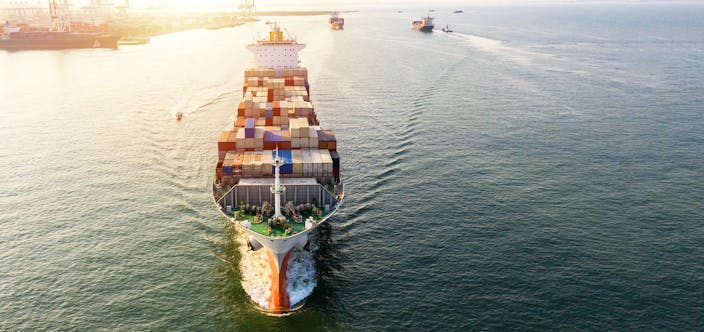Know Your Fuel
In our last Lessons Learned Webinar we invited 8 global stakeholders from the oil industry, engine manufacturers, vessel design, fuel filtering industry and fuel testing industry together with end users to a webinar discussion about lessons learned within marine fuels & bunkers. This is the key takeaways from the webinar learnings.

Key messages:
- Know your fuel!
- Testing according to ISO 8217:2017
- If possible – do not use the fuel before the analyses are available
- Temperature management – viscosity is temperature-dependent
- Keep fuels segregated – until compatibility has been verified
- Consult your engine maker’s instructions and technical bulletins
Bunker & Fuel
We invited 8 global stakeholders from the oil industry, engine manufacturers, vessel design, fuel filtering industry and fuel testing industry together with end users to a webinar discussion about lessons learned within marine fuels & bunkers.
Daniel Eriksson, our Claims Executive, moderated The Panel which consisted of:
- Charlotte Røjgaard, Global Head of Bureau Veritas’ Marine Fuel Services (VeriFuel)
- Kaj Portin, Program Manager at Wärtsilä Finland Oy
- Kjeld Aabo, Director New Technologies at MAN ES
- Jan-Erik Räsänen, Chief Technology Officer at Foreship Ltd.
- Dan Reineck, Technical Superintendent/ Machinery Supervisor at Wallenius Marine AB
- Markus Hoffman, Manager Global Sales at Alfa Laval
- Jörgen Mansnerus, VP, Marine Management at Bore Ltd
- Sveta Ukkonen, Head of Marine Fuels at Neste Oy
Key takeaways:
- In order to reach IMO’s 2050 target regarding reductions in CO2 emissions and greenhouse gases, we need to focus on vessel and engine design flexibility so that they can easily be adapted to diverse shipping segments and geographical zones.
- Today we see that ammonia is the most interesting new marine fuel for two-stroke engines while hydrogen has most potential for fuelling four-stroke engines.
- Reaching the target requires that all stakeholders contribute.
- The rules need to be clear and consistent so that everyone investing in new technologies and fuels can trust in and rely on them.
“No one can afford to be green alone”
Kjeld Aabo
- Recycling old vessels and ordering new ones is not sustainable today, and instead we need to work towards extended lifecycles of ships.
- LPG fuel has the potential to reduce emissions to air – both CO2 and other particles – not just from today’s two-stroke engines, but also from four-stroke engines.
- It is possible to convert from LPG to ammonia.
- The markets have control over technology providers. With the current increase of investments in alternative fuels, we can expect a diversified palette of fuels in the future.
- When it comes to compatibility, the chemical composition and the reliability of a fuel are not synonymous. As compared to ULSFO/VLSFO, HFO is less of a mixture, whereas HFO is typically mixed to gain the desired viscosity. ULSFO/VLSFO in hand is diluted with distillates until the desired sulphur limit is reached. This entails that the distillates may consist of many different chemical compositions. In practice, this means that the chemical composition of the fuel varies every time fuel is bunkered.
“I think there are a lot of misunderstandings in the industry when it comes to the chemical composition of marine fuels”
Charlotte Røjgaard
- Marine fuels have always been the biproduct of or the leftovers from when refiners have taken the most valuable resources out of the fuel. Thus, they have been a good and cheap fuels for the industry. Marine fuels work well in marine engines, while it has been advantageous for the refineries to get rid of this biproduct.
- Regarding operator safety and fuel consumption, testing to ISO8217 is a good starting point.
“When it comes to fuel standards, quality issues are not being covered”
Jörgen Mansnerus
- 5 % of fuel is currently contaminated with chemicals.
- Fuel handling must comply with clear standards, whether carried out by the supplier, in port or onboard.
- Be aware of safety aspects while handling fuel. Incidents have shown that chemicals in the fuel can affect the crew’s well-being.
Compliance
- Regulation 18.2 of MARPOL Annex VI describes the correct procedures in case of vessel not being able to receive compliant fuel:
- Notify your flag state and the port authority at the next port of call
- Provide evidence of actions taken to achieve compliance
- Fill and submit the FONAR (Fuel Oil Non-Availability Report) form
- Fonar template > fonar-resolution mepc.32074
- N.B. FONAR is not a “license” to use non-compliant fuel!
Further Information:
MEPC.1-Circ.881 Guidance for port State control on contingency measures
Resolution MEPC.320(74) 2019 Guidelines for consistent implementation
CIMAC:
Joint Industry Guidance on the supply and use of 0,50%-sulphur marine fuel in short
Joint Industry Guidance on the supply and use of 0.50 – sulphur marine fuel 20 August 2019


